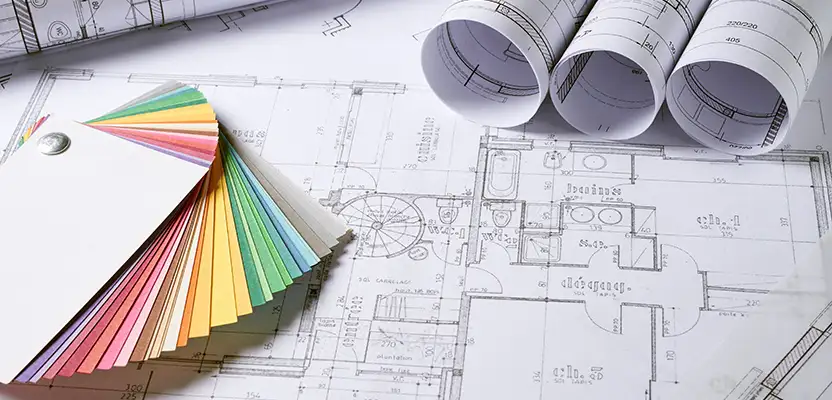Architect Checklist for New Commercial Projects
Architect Checklist for New Commercial Projects
Blog Article
Understanding the Diverse Profession Paths Available for Aspiring Architect
As an ambitious Architect, you have a world of job paths waiting on you. Each path uses one-of-a-kind obstacles and chances to use your creative thinking and technical knowledge. Whether you're drawn to traditional design or the subtleties of sustainable layout, there's a specific niche that lines up with your interests. Comprehending these diverse alternatives can shape your specialist trip, but which instructions will you pick to check out first?
Standard Architecture: Creating Structures and buildings
Conventional design focuses on making structures and structures that mix capability with visual appeal. Your designs can reflect social heritage, showcasing local practices while satisfying modern-day needs.
You'll develop abilities in composing, model-making, and website evaluation, enabling you to visualize and communicate your ideas successfully. Involving with clients, you'll need to comprehend their vision and equate it right into feasible styles.
In addition, developing codes and sustainability techniques are essential in your job, guaranteeing your structures are risk-free and eco friendly. As you grow in your occupation, you'll discover opportunities in household, industrial, and even remediation jobs, each offering distinct obstacles. Welcoming typical style leads the way for a satisfying occupation that admires the past while shaping the future.
Urban Planning: Forming Areas and Public Spaces
As an aspiring Architect, you can play a necessary duty as a metropolitan coordinator, transforming how communities operate and interact. By using neighborhood involvement approaches, you'll ensure that homeowners have a voice in shaping their atmosphere. Plus, incorporating lasting style concepts will help develop areas that not just satisfy today's needs yet additionally safeguard the future.
Duty of Urban Planners
While lots of could consider architects as the single enthusiasts behind buildings, metropolitan coordinators play a crucial function in shaping the broader landscape of areas and public rooms. They analyze land usage, zoning laws, and area needs to produce lasting settings that enhance top quality of life. By teaming up with various stakeholders, you'll aid create parks, transport systems, and houses that promote social interaction and access. Urban planners additionally concentrate on ecological factors to consider, making sure that growths integrate eco-friendly rooms and support biodiversity. Your proficiency in spatial design and neighborhood characteristics enables you to imagine future development while protecting social heritage. In this crucial role, you'll directly influence exactly how individuals experience their surroundings, making every task an opportunity for positive change.
Area Interaction Techniques
Reliable community engagement strategies are crucial for city planners to ensure that the voices of homeowners are listened to and valued in the planning process. To cultivate meaningful dialogue, you ought to focus on open forums and workshops where community members can reveal their concepts and worries. Use studies and social media to reach a broader audience, guaranteeing varied point of views are included. Collaborating with local companies can boost trust fund and facilitate much deeper connections. It is very important to provide clear info regarding decision-making processes and suggested jobs, allowing residents to feel enlightened and encouraged. By proactively incorporating and listening feedback, you'll produce spaces that show the community's demands, ultimately leading to even more successful and lasting city environments. Embrace transparency and constant dialogue for long-term impact.
Lasting Layout Principles
When creating city areas, including lasting layout principles is essential for producing atmospheres that grow both ecologically and socially. Think about integrating eco-friendly spaces, like parks and yards, to boost biodiversity and enhance air quality.
Creating with water preservation in mind is likewise key-- assume concerning rainfall gardens and absorptive surface areas to take care of stormwater. Including community members during the planning procedure assurances that the spaces you create fulfill their requirements and encourage social interaction. By welcoming these concepts, you'll contribute to lively, lasting metropolitan landscapes that benefit every person.

Landscape Architecture: Producing Lasting Outdoor Settings
As you check out landscape design, you'll find important style concepts that develop attractive and useful exterior spaces. Sustainable methods play a vital duty in making sure these environments thrive while reducing ecological impact. And also, you'll discover a range of occupation opportunities that allow you to make a genuine distinction in just how people interact with nature.
Design Principles in Landscape
Understanding design principles in landscape design is necessary for producing sustainable outside settings that integrate with nature. You'll require to ponder elements like balance, scale, and percentage to guarantee your styles really feel natural and welcoming. Integrating indigenous plants not only improves biodiversity however also decreases water use, making your landscape durable. Think of the circulation of room and how individuals connect with it; paths and seating locations should welcome expedition and leisure. Furthermore, take notice of seasonal modifications, designing with products that match the surroundings year-round (Architect). By prioritizing sustainability and aesthetics, you can create outdoor spaces that enrich the community and advertise well-being. Embracing these principles will certainly establish a solid structure for your occupation in landscape style.
Sustainable Practices Overview
Lasting methods in landscape architecture not only concentrate on aesthetic appeals but likewise prioritize environmental wellness and resource conservation. You can make spaces that promote dirt health and wellness, such as using natural materials and exercising permaculture principles. Ultimately, these techniques guarantee your designs profit both individuals and additional info the environment for years to come.
Job Opportunities Expedition
With a strong structure in sustainable practices, landscape architecture supplies a selection of profession courses that enable you to make a meaningful influence on the setting. You could work as a landscape designer, creating aesthetically pleasing and practical outside rooms, or specialize in ecological reconstruction, aiding to revive broken ecological communities. Urban planners frequently collaborate with landscape designers to develop green rooms in city setups, boosting city livability. If you're passionate about education and learning, consider coming to be a landscape style instructor, motivating future generations. In addition, you might deal with nonprofits concentrated on environmental sustainability or participate in research to innovate new methods. Each course not only forms stunning environments however additionally fosters a much healthier world for future generations.
Lasting Layout: Concentrating on Eco-Friendly Practices
As you discover your profession in architecture, accepting green practices can set you apart in an affordable area. Lasting design concentrates on developing structures that decrease environmental impact while boosting owner wellness. By including eco-friendly products, energy-efficient systems, and sustainable building strategies, you'll add to a greener future.
Start by gaining expertise of environment-friendly certifications like LEED or BREEAM, which can bolster your qualifications. Consider exactly how natural light, air flow, and thermal effectiveness can maximize style. Team up with engineers and environmental professionals to innovate solutions that minimize waste and save sources.
Don't forget the importance of neighborhood involvement-- appealing regional stakeholders can motivate styles that balance with the atmosphere. As customers significantly prioritize sustainability, your know-how in eco-friendly techniques will certainly not just bring in jobs however also fulfill your enthusiasm for responsible design. Embrace this critical aspect of the career, and view your profession grow.
Historical Preservation: Safeguarding and Recovering Cultural Heritage
While you commence on your building trip, consider the vital duty of historic conservation in preserving our social heritage. This field concentrates on the security and remediation of significant structures, websites, and frameworks that inform the stories of our past. By participating in historical conservation, you'll help safeguard the building heritage that shapes community identification.
As a historical preservation Architect, you'll assess historic importance and assess the problem of structures. You'll function very closely with chroniclers and guardians to assure authentic remediation methods are used. This career course enables you to mix imagination with research, enabling you to create options that appreciate initial products and workmanship.
Your work not just adds to sustainability by recycling existing structures however also cultivates a feeling of satisfaction within neighborhoods. Embracing this course will assist you come to be a guardian of background, maintaining the stories and aesthetic appeals that enrich our lives.
Interior Architecture: Enhancing Indoor Spaces
Historic conservation and interior design both share a dedication to enhancing the developed atmosphere, yet they concentrate on different aspects. While historical preservation emphasizes preserving a structure's historic and cultural value, indoor style zeroes in on enhancing indoor rooms for performance and appearances.
As an ambitious Architect, you'll locate that interior style allows you to blend imagination with technical abilities. You'll design spaces that not just look excellent yet also promote comfort and efficiency. This area includes understanding exactly how light, shade, and products connect within a space, influencing mood and use.
You'll deal with various tasks, from household homes to commercial workplaces, ensuring that each environment fulfills the requirements of its owners. By prioritizing customer experience, you can transform insides into functional and motivating areas, making a considerable influence on how people interact with their surroundings. Accept the chance to enhance indoor environments and shape the way individuals live and work.
Industrial Style: Merging Performance With Aesthetic Appeals
Industrial design plays an important role in developing items that seamlessly blend looks with capability, ensuring that what you use daily is not only aesthetically appealing but likewise useful. As an ambitious Architect, you might engage yourself in this field, concentrating on creating whatever from furniture to customer electronics. Your job involves recognizing user demands, materials, and making processes, allowing you to develop cutting-edge remedies that enhance everyday experiences.
In commercial style, you'll frequently work together with marketers, designers, and suppliers, making sure that your designs are not just lovely however also possible. This occupation path uses a vibrant environment where creativity meets usefulness, making it a gratifying option for architects interested in shaping the items of tomorrow.
Frequently Asked Inquiries
What Educational Credentials Do I Need to End Up Being an Engineer?
To become a designer, you'll require a professional level in design, typically a Bachelor's or Master's. Additionally, you'll need to finish a teaching fellowship and pass the Architect Registration Assessment to practice lawfully.
Are There Certification Requirements for Different Architectural Job Paths?
Yes, there're qualification needs for numerous building courses. Architect. You'll need to pass examinations, total teaching fellowships, and often seek specialized training, relying on your selected emphasis, like landscape architecture, city layout, or historical conservation
What Software Application Skills Are Essential for Engineers Today?

How Can I Gain Practical Experience While Examining Architecture?
You can obtain useful experience by interning at architectural firms, joining design competitions, volunteering for neighborhood tasks, or teaming up with classmates on real-world tasks. These opportunities improve your abilities and develop useful links in the sector.
What Job Opportunities Exist Outside Traditional Architecture Firms?
You can discover find out various task opportunities outside standard style companies, like metropolitan preparation, interior decoration, landscape style, construction monitoring, realty growth, or also roles in sustainability consulting. Each deals unique difficulties and rewards.
Whether you're attracted to traditional style or the nuances of lasting layout, there's a niche that straightens with your rate of interests.When designing metropolitan rooms, integrating sustainable design principles is critical for creating environments that flourish both environmentally and socially.As you check out landscape style, you'll find crucial design concepts that create lovely and functional outside spaces.Understanding layout principles in landscape design is essential for developing sustainable outdoor atmospheres that harmonize with nature.In industrial layout, you'll usually team up with engineers, suppliers, and marketers, making sure that your designs are not just gorgeous but also viable.
Report this page